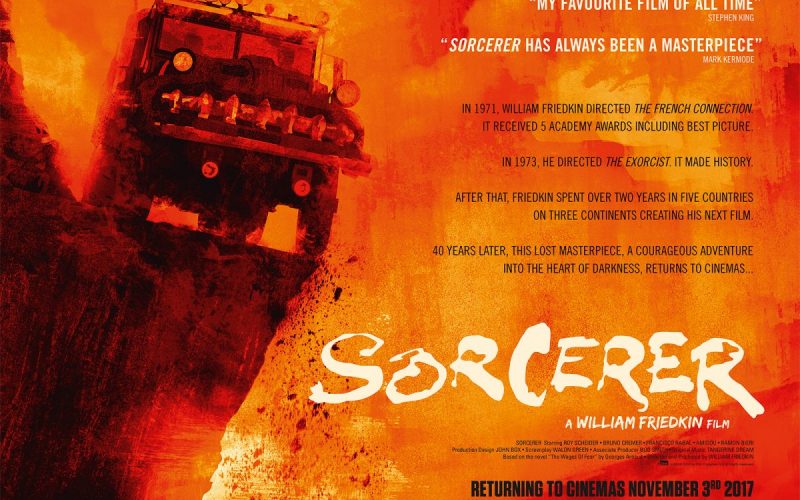William Friedkin’s Sorcerer (1977).
Back in the mid ’70s one of the hottest names in Hollywood was William Friedkin. In 1971 he directed the Oscar winning The French Connection, a film which combined the artificiality of narrative cinema with a documentary style that resulted in a heightened sense of reality and immediacy. He followed the tremendous success of that film with The Exorcist (1973), a film which broke box office records, terrorising millions and cementing his position in the upper echelons of the filmmaking elite.
He was in a position to make whatever he wanted, to command the greatest actors and big budgets, yet it would be four years before he would release another film. When Sorcerer was released it ended up bombing at the box office and, according to Friedkin, ruined his reputation. It would be years before he would recover and for cinephiles around the world to reevaluate his importance and return him, once again, to the position of high regard he once occupied.
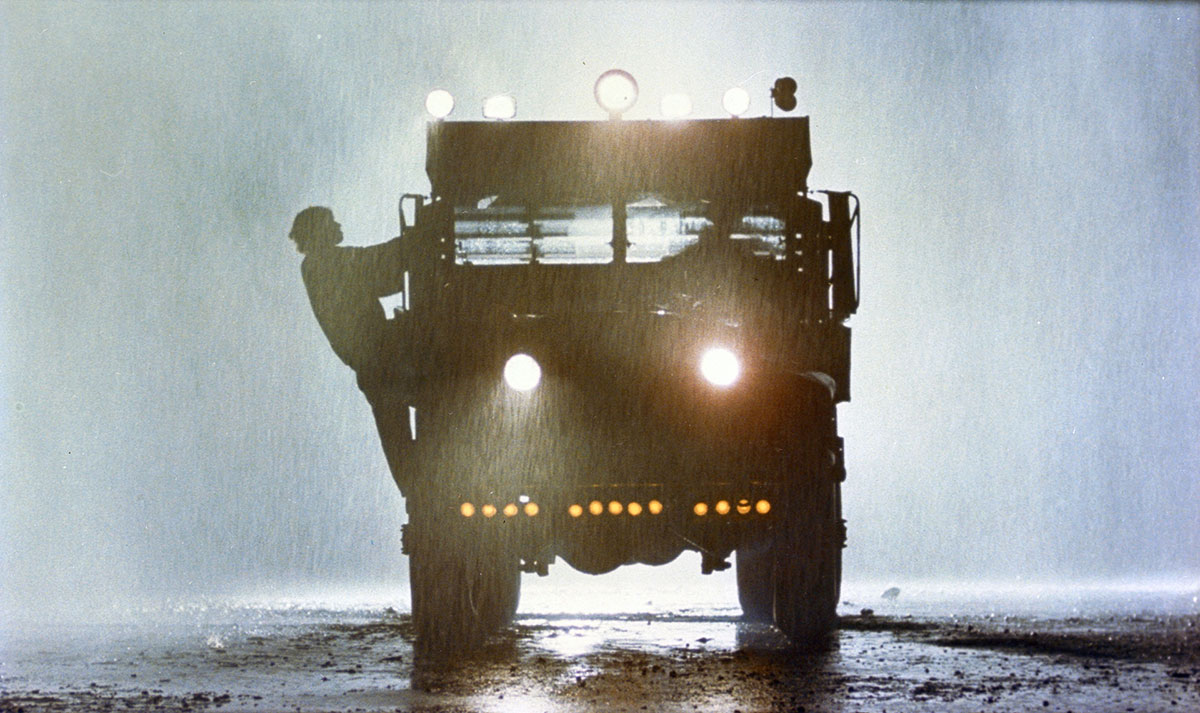
Written by Walon Green (The Wild Bunch, RoboCop 2), Sorcerer is based on The Wages Of Fear, a novel by Georges Arnaud which had previously been adapted for the big screen by Henri-Georges Clouzot (1953), and focuses on four criminals who, on the run from the law and other criminals, end up in a small rundown oil town in South America. It is a terrible, bleak place with very little chance of escape. The criminals are brought together after an explosion at the oil rig results in volunteers being required to drive some very volatile explosives 218 miles from the nearest town to the remote rig.
What follows is one of the most tension-filled dramas ever filmed as our four anti-heroes traverse rickety bridges over wild rivers in the pouring rain, roads which are extremely bumpy and narrow and a seemingly alien landscape. They are pushed to the very limits of endurance both physically and psychologically.
The first thing that must be said about Sorcerer is that it is not a happy ride. The four main protagonists are not deserving of happy endings and neither are they worthy of any real empathy. They are murderers, assassins and thieves.
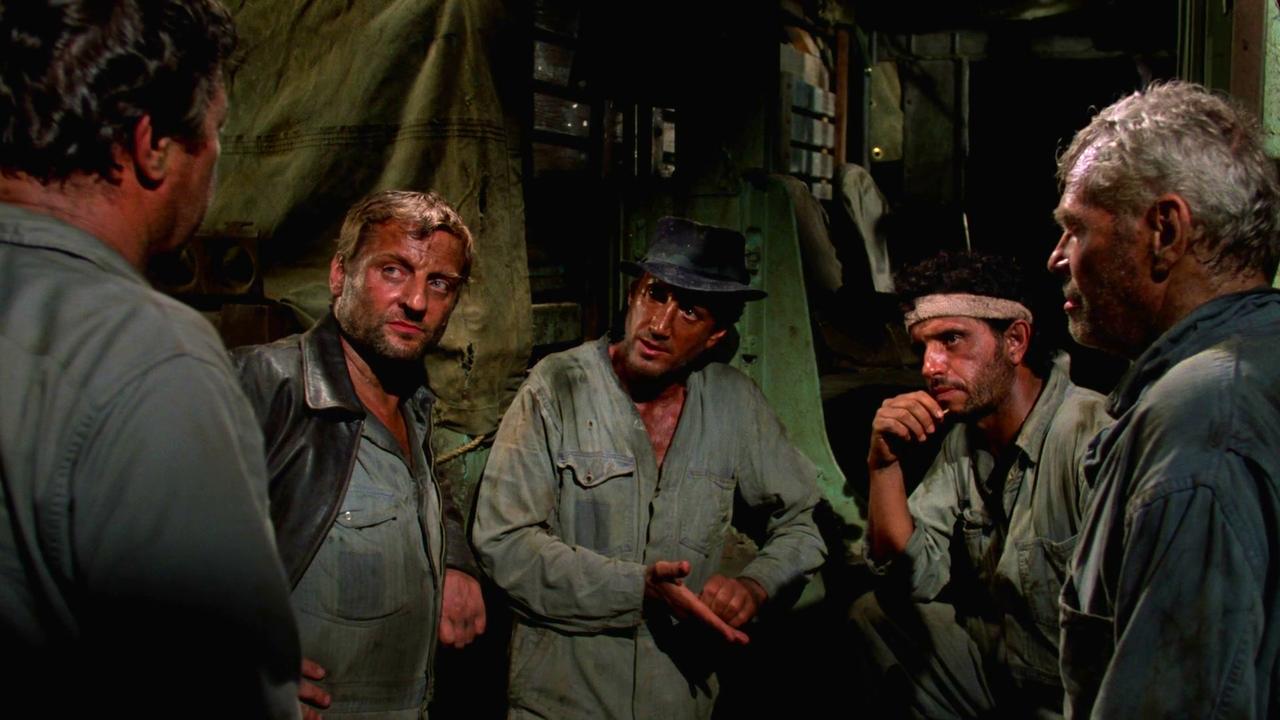
We start in Vera Cruz, Mexico, where Nilo (Francisco Rabal) silently enters an apartment, aims a gun and shoots the tenant, who dies with a blank, expressionless face. We aren’t told why this murder has been committed, what the victim has done or what happens to Nilo immediately afterwards. Just like the murder itself, the scene is an example of cold efficiency and is almost silent. The only sounds are the ambient noises of the building, the streets and the gun shot.
In the next scene we are taken to Jerusalem, where a group of young men disguised as Jewish students plant a bomb in a busy street and, after the explosion, escape to a hideout where they’re preparing to leave the city. They’re soon surrounded by Israeli police and after a gun fight, only one man, Kassem (Amidou) survives. There’s some dialogue here but nothing which expands upon who these men are and what they’re fighting for.
Next we’re in France were Victor (Bruno Cremer) is accused of bank fraud. He has twenty four hours to clear the mess up and his options quickly evaporate. After his business partner commits suicide, Victor realises that he’s run out of options and that his future is a bleak one. He has no choice but to run, leaving his wife in a restaurant waiting for him to return to the table.
Finally we are in the mean streets of New Jersey where a gang robs a church of its Bingo takings. There are shots fired and one of the priests, whose brother is a well known member of the mafia, is injured. As they escape an argument breaks out which results in the getaway car crashing. There is only one survivor, Jackie Scanlon (Roy Scheider) who manages to get away, but a price is put on his head and he has no option but to run.
All four men find themselves in Porvenir, a small desperate village in South America (it was filmed in the Dominican Republic with some scenes in Mexico). Kassem, Victor, and Jackie find work for the local Oil Company which dominates the village. It’s hard, exhausting work which pays just enough for them to scrape a living but not enough to ever get out. All three are living under false identities and Jackie has to pay bribe money to the local police so that they’ll look the other way and allow him to carry on working. When the opportunity arises to drive the trucks and get paid enough to get out of this hellhole, they jump at the chance.
What follows are some of the most tense, brutal scenes ever put to film. There’s a palpable sense of nervousness and anxiety throughout and small inconveniences are writ large on the minds of these men knowing that one bump could be the end of them. They know the dangers and accept them although, as their journey progresses, each man’s confidence is eroded and replaced by fear, exhaustion and apprehension.
But Friedkin isn’t happy for the men to face small obstacles. They must face roads that are too narrow to turn on, collapsed trees blocking their way and, in the undoubted highlight of the film, a trip across a derelict bridge on the verge of collapse over a raging river in the middle of a storm. Friedkin has said that the fear on the actor’s faces in this scene wasn’t them acting, the danger was real and there was the strong possibility of injury. From most directors this might seem like hyperbole but this was the man who, in search for the perfect performance, permanently injured Ellen Burstyn’s back on the set of The Exorcist and would fire a starter pistol on set to obtain the desired look of shock and fear. The whole scene is a tour de force of filmmaking and a dazzling reminder, if one is needed, of how good Friedkin can be. There are brilliant moments throughout his career – the car chases in The French Connection (with an L-train) and To Live And Die In L.A. (against the flow of traffic) or the terrifying scenes in Regan’s bedroom in The Exorcist – but this is arguably his best.
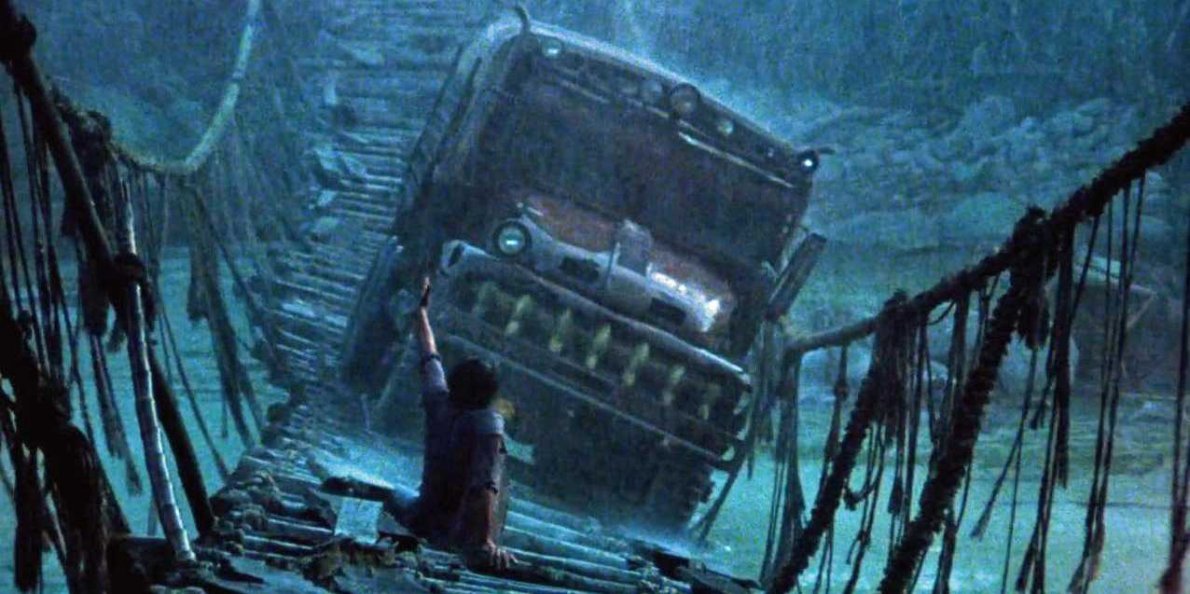
Friedkin’s unusual approach to filmmaking is no more apparent than in the scene where a large tree blocks the route and the men have to use some of the explosive to blow it up and clear the path. The special effects supervisor, Marcel Vercoutere – who had previously worked on The Exorcist – tried blowing it up but the tree was hardly affected so Friedkin brought in an arsonist from New York known to everyone as ‘Marvin The Torch’ who managed to obliterate the tree in one take.
There’s very little dialogue in Sorcerer. The main characters are men of action, not words, and there are long scenes of near silence. In fact, if the dialogue was taken out and replaced with title cards, Sorcerer would pass as a silent movie without impacting the film much at all. Alfred Hitchcock, in his famous conversation with François Truffaut, claimed that the best of silent film represented ‘pure cinema’ as it did not rely on dialogue to tell us what’s happening on screen. Silent movies rely solely on the visuals to tell the story. This being the case I would say that Sorcerer is pure cinema with sound as there are very few scenes which require or provide a verbal explanation.
What we get instead is a beautifully visual movie with dirty, grimy cinematography by Dick Bush and John Stephens (Freidkin wasn’t happy with the jungle footage, feeling it was under-exposed and hired another crew headed by Stephens to continue production after Bush left), accompanied by a perfectly fitting score by Tangerine Dream, as well as some truly great acting. Initially the script was written for Steve McQueen in the role of Jackie Scanlon, but having recently married Ali Macgraw, McQueen refused to leave the United States so the role went to the ever brilliant and hugely underrated Roy Scheider.
On it’s initial 1977 release Sorcerer was a failure. It was released only a few weeks after Star Wars and many have said that this significantly damaged its box office potential. Some critics have also claimed that that moment marks the demarcation line between the golden period of independent films in the 1970s and the birth of the Blockbuster era that dominated the ‘80s.
Part of the problem it had in capturing an audience was, I believe, its name. A film called Sorcerer from the director of The Exorcist gives the impression the film was something it is not. This undoubtedly caused confusion in its potential audience. It was, Friedkin claimed “an intentional but ill-advised reference to The Exorcist.”
The title actually refers to the name of one of the two trucks that the men drive with the dynamite in the back (the other was Lazaro). The original title was Ball Breaker but Friedkin was inspired to change the title after listening to Miles Davies’ Sorcerer and felt it referred to the “evil wizard” that is fate. If there is one theme that sums up Sorcerer it is indeed fate. Whilst it could be argued that all four men have acted in ways that have sealed their own fates, none would have ever chosen this. It’s as if Porvenir is a form of purgatory and they are all there for a short stop before descending into Hell itself. Friedkin believed the original film and novel to be about enemies forced to work together which, he thought, perfectly reflected the times in which they were living in. Each man is stretched to the very limits of his endurance with only brief moments when it can look like they may actually overcome the huge obstacles before them, but this is just an illusion. It is almost as if Fate has been waiting for them to relax, to think there is light at the end of the tunnel. It strikes them when their guard is down, when they dare to look ahead and think there maybe some kind of future for them. There are two moments in the film where one or more of the men relax, to reflect on their past and everything that has brought them there, and that is when tragedy strikes. 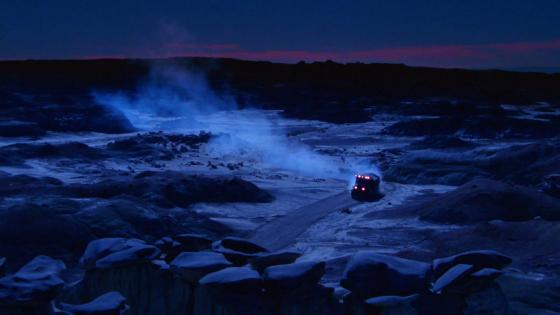
Sorcerer is not a happy film. It isn’t a life affirming experience for our protagonists and there are no lessons for these men to learn in order to become better people at the end. Instead we have a steady decent into Hell. Yet, at the end of the film, we the audience feel that we have experienced something remarkable. From the grime of Porvenir to the striking lunar-esque landscapes of the finale, we are taken on a thrilling ride through the dark heart of man and the desperation we can feel when faced with hitting rock bottom.
The fact that Sorcerer has been neglected for four decades is incredibly sad. It is a true masterpiece and an example of a master filmmaker at the very top of his game. For me Sorcerer stands alongside The Exorcist, The Godfather films, Taxi Driver, Jaws and (ironically) Star Wars as one of the greatest films of the ‘70s and American cinema history.
Film ‘89 Verdict – 10/10
Sorcerer is currently available in the US on Blu Ray courtesy of Warner Brothers and in the UK courtesy of eOne as of Monday November 6th. It is also on limited theatrical release in selected venues across the UK.

